-
Earth Science Journal!
Title: Ground Water!
Learning Objectives
Students will be able to:
1. Discern between porosity, permeability, and capillarity
2. Correctly identify how particle shape, packing, and sorting affect the porosity, permeability, and capillarity of a soil
3. Identify the water table in a landscape or soil profile
4. Predict what will happen to the water table under differing conditions of evapotranspiration, runoff, infiltration, or precipitation.
Is the glass "half-full" or "half-empty"?
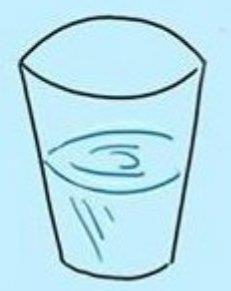
Today we are going to investigate how the size, shape, and sorting of sediments affect how water interacts with the air spaces within the soil or sediments.
We tend to forget about air as being something. Remember when we weighed the empty balloon and then filled it with air, and it weighed more?
Air is stuff. Stuff is matter. The matter has mass, and mass can be measured.
This lesson has us examine how different sizes, shapes, and phases of matter fill up or pass through those “spaces.”
It will take imagination and experimentation to figure out how water travels through the ground.
Porosity!
Please write down the following definition of porosity.
Porosity: Percent of "empty" space within fractured rock or soil; the volume of pore space in a material compared with its volume.Draw two boxes filled with different-sized (round and sorted) sediment.
You don't need to draw all the sediments, but at least draw a few examples.Box 1 Box 2 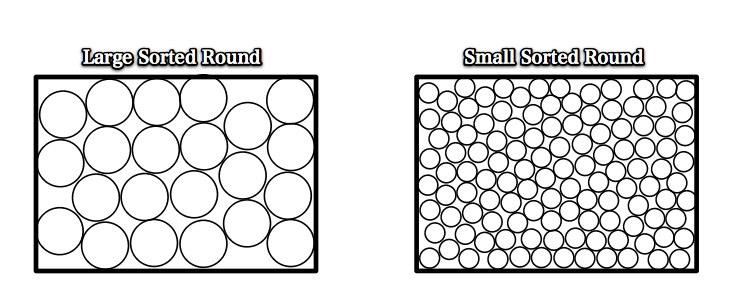
Imagine that you filled both boxes with water.
Box 1 Box 2 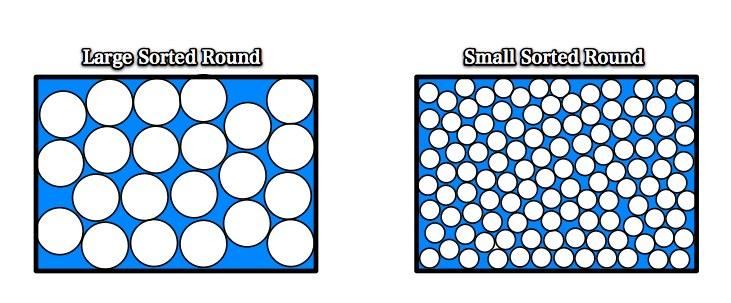
1. Which box do you think will hold the most water?
Why?
Surprisingly!
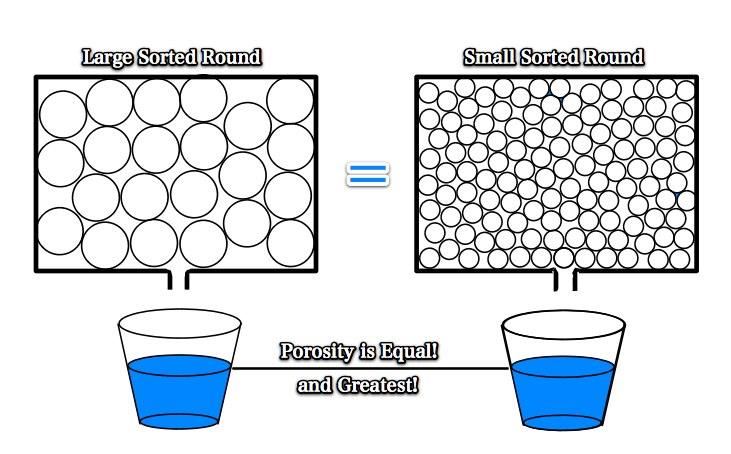
The porosity is equal as long as the sediment is round and well-sorted!
Be sure to write down the above in your journal.
Note: there are a number of factors that may influence our demonstrationPlease draw a bar graph in your journals.
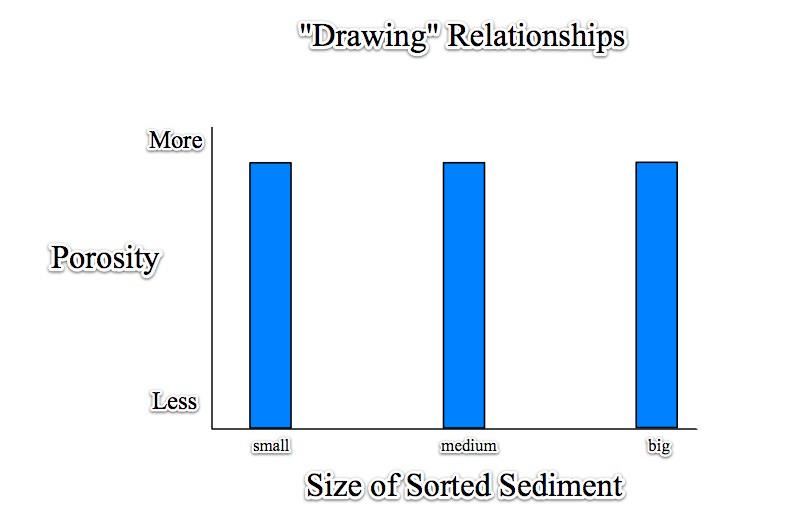
2. What is the relationship between sorted round sediment size and porosity?
Answer: As the size of the sorted sediment increases, the porosity remains the same!
3. What would happen to the porosity if you sliced up those round particles?
Answer: The porosity decreases.Porosity Relationships
Finish this sentence.4. As the shape of the sediment becomes less round, the porosity decreases.
Why would they box these basketballs?
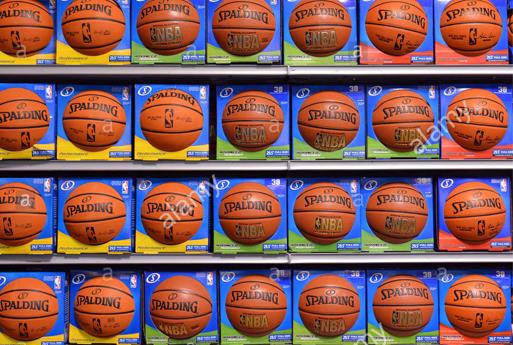
By putting the round spheres in boxes, they can stack them closer together, reducing the porosity and increasing their stability.
5. What would happen to the porosity if you mixed different-sized, round sediment? Why?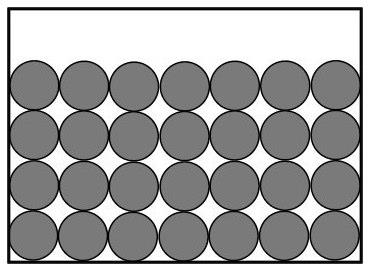 Notice what happens to the amount of pore space when we place smaller spheres in the pores.
Notice what happens to the amount of pore space when we place smaller spheres in the pores.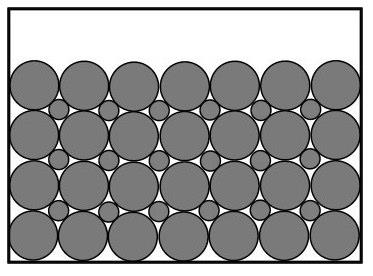 If we mix different-sized sediments, the porosity will decrease
If we mix different-sized sediments, the porosity will decrease
6. Is a container filled with golf balls full? Why or why not?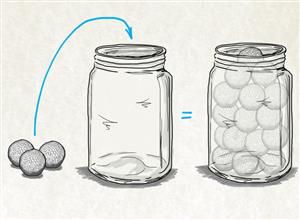 What else could we fit in the jar?
What else could we fit in the jar?
Pebbles, Sand, Silt, Clay, Water...Where is that stuff going?Into the pore spaces that were filled with air.
Answer: Smaller sediments would fill the pore spaces between the larger sediments, decreasing the overall porosity.7. Where is the Water Table?
Label it in your journal.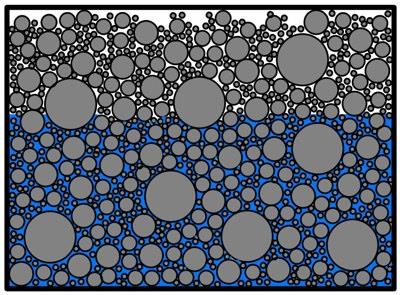
8. What would affect the height of the water table?
Finish these sentences.
A. More rainfall would Increase the height of the water table.
B. More evapotranspiration would decrease the height of the water table.
Permeability!
(ability to permeate)
Please write down the following definition.Permeability: the ability of water to flow through a substance.
Permeability reminds me of Plinko.Permeability races!
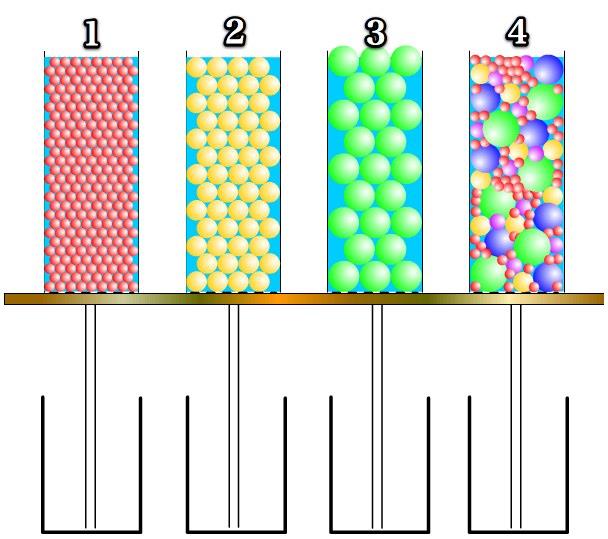
Please draw the following data table.
Which tube will have the greatest permeability?
Tube Description Prediction Actual 1 Small Sorted Sediment 3 ________ 2 Medium Sorted Sediment 2 ________ 3 Large Sorted Sediment 1 Greatest 4 Mixed Sediment 4 Least Make your prediction of which will have the greatest permeability.
Please write down and finish this sentence.
9. As the size of the sorted sediment increases, the sediment permeability increases.Capillarity!
(race to the top)Please write down this definition of Capillarity.
Capillarity: the ability of soil to draw water upwardLook at the photo below and decide what size sediment has the greatest Capillarity.
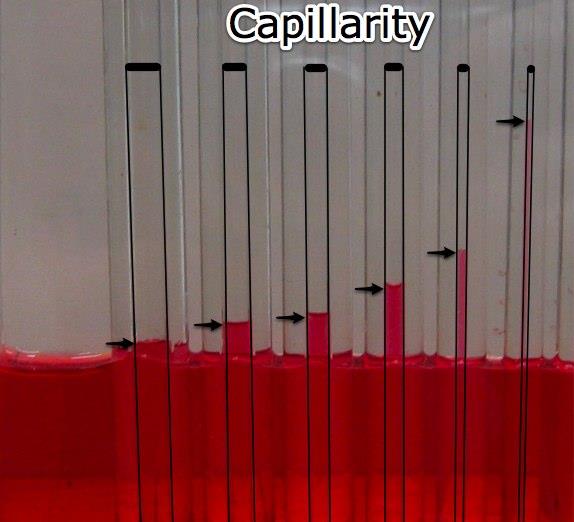 Please copy this graph and draw the relationship.
Please copy this graph and draw the relationship.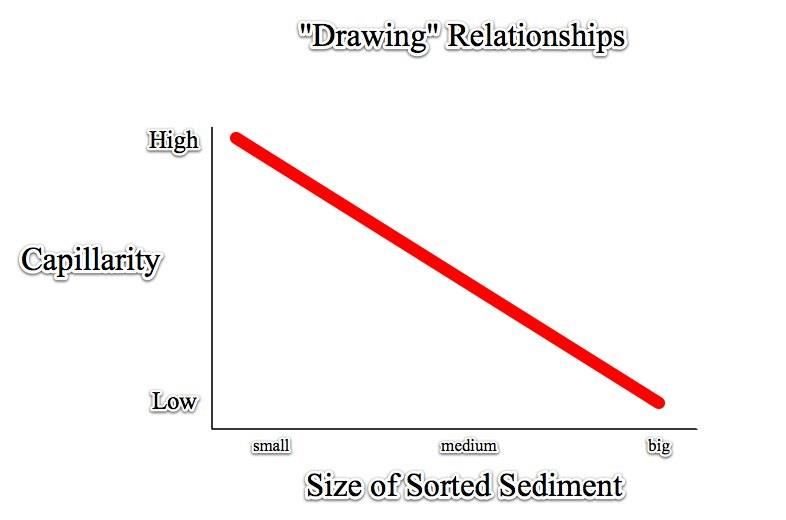
Water Retention: the ability of soil to hold water.
Water retention is similar to capillarity because the soil with the greatest capillarity also has the greatest water retention.Write the following question and answer in your journals.11. Which size of sediment is best able to retain water?
Why?
Soil with the smallest sediment retains the most water because there is more surface area.Plants are able to "drink" water from the ground even though their roots are not below the water table because soil soaks up water through capillarity and holds onto the water by retention. The smaller the sediment, the better.
ReviewPOROSITY: amount of space between sediment (pore space)
PERMEABILITY: ability for water to flow down (ability to plinko)
CAPILLARITY: the ability for water to soak up (catapillarity)12. These three containers all have the same ___________.
porosity.___13. The smallest sorted sediment has the greatest ___________.
capillarity and Water Retention.14. The largest sorted sediment has the greatest ___________.
permeability or infiltration
A "cool" example of surface area!
15. Which has more surface area, the large group of penguins huddled together or all the individual penguins separated?Explain your answer.
All the individual penguins walking apart have much more surface exposed to the cold conditions.
The only way they can survive is to huddle together to reduce their surface area exposure.
ReflectionDescribe the relative porosity, permeability, capillarity, and water retention of small, sorted sediment.
Physical Setting/Earth ScienceCore Curriculum1.2g Earth has continuously been recycling water since the outgassing of water early inits history. This constant recirculation of water at and near the Earth’s surface is described by the hydrologic (water) cycle.
Water is returned from the atmosphere to Earth’s surface by precipitation. Waterreturns to the atmosphere by evaporation or transpiration from plants. A portion ofthe precipitation becomes runoff over the land or infiltrates the ground tobecome stored in the soil or groundwater below the water table. Soil capillarityinfluences these processes.
The amount of precipitation that seeps into the ground or runs off is influenced byclimate, the slope of the land, soil, rock type, vegetation, land use, and degree ofsaturation.
Porosity, permeability, and water retention affect runoff and infiltration.Bonus
Do the following experiment!
Playing with Porosity!
Define
Porosity: Portion or percent of empty space within fractured rock or soil; the volume of pore space in a material compared with its volume.
Step 1: Predict which paper towel brand you think will have the greatest porosity.
Write down your prediction.
Note: Your prediction does not have to be like your partners'.
You will need to obtain three different brands of paper towels.Step 2: Examine the list of materials below that you have available and devise a procedure with your partner that you think will most accurately test the porosity of the paper towels. Think about what you will need to do to ensure that only the towels' porosity is what you are testing.
Materials available: three different brand-name paper towels, beakers, graduated cylinders, water, electronic balance, paper cups, food coloring, eye droppers, markers, pencils, scissors, graph paper, stopwatch, rulers...
(please ask if you think you need anything else not listed above)Step 3: Write your procedures in a step-by-step (cookbook style) fashion so you can follow the same procedure for all three brands of paper towels.
Step 4: Make a data table to write down your observations.
Step 5: Discuss your procedure with your teacher and get permission to do your tests (show your work).
Step 6: Once given permission, conduct your experiment and carefully collect and record your data.Note: any changes in your procedure (as you find better methods to do things) should be added and explained to your original procedure.
Step 7: Graph your results in any format appropriate for your data.
Step 8: Write a conclusion about your results.
Does your conclusion support your prediction? Why or why not?Congratulations, you are doing Science!
Comparing Results
Step 9: Compare your data with your peers. Does your data support the majority of your classmates?
What could have caused errors in your experiment, and what would you do next time to make it more reliable?
Examining Your Soil Porosity!
http://www.earthsciweek.org/ncli/edact/properties.html
"Soil porosity" refers to the amount of pore or open space between soil particles. Pore spaces may be formed due to the movement of roots, worms, and insects, expanding gases trapped within these spaces by groundwater, and/or the dissolution of the soil's parent material. Soil texture can also affect soil porosity.
There are three main soil textures: sand, silt, and clay. Sand particles have diameters between .05 and 2.0 mm (visible to the naked eye) and are gritty to the touch. Silt is smooth and slippery to the touch when wet, and individual particles are between .002 and .05 mm in size (much smaller than those of sand). Clay is less than .002 mm in size and is sticky when wet. The differences in the size and shape of sand, silt, and clay influence how the soil particles fit together and, thus, their porosity.
Soil porosity is important for many reasons. A primary reason is that soil pores contain the groundwater many drink. Another important aspect of soil porosity concerns the oxygen found within these pore spaces. All plants need oxygen for respiration, so well-aerated soil is important for growing crops. Compaction by construction equipment or our feet can decrease soil porosity and negatively impact the ability of soil to provide the oxygen and water that plants need to survive.
Materials
Two clear plastic bottles, a measuring cup, and a gallon of water
Fine, playground-style sand and coarse, aquarium-style gravel
A blank piece of paper and something to write on
Pencil or pen
Ruler
Metal spoon or gardening spadeProcedure
1. make a data table like the one below on a piece of paper.
Soil particle type Volume of Water used gravel sand 2. Fill one plastic bottle with sand and one with gravel.
3. Use the measuring cup to pour the water slowly into the gravel, stopping when the water covers the top of the gravel. Make sure to record the amount of water that you pour.
4. Record the amount of water used in your data table.
5. Repeat step 3 with the sand and record the water used in your data table.
6. Which substance has more pore space: gravel or sand? How did you make this decision?Part II
7. Clean your containers and take them outside (on a nice day). Besides the two empty containers and water, you will also need paper and a pencil to record observations. Draw the data table below.
Survey area Volume of Water used (ml) # 1 # 2 8. Find a place outside where it is permissible to collect small soil samples.
9. Record observations of this survey area. Look at the types of plants growing in the soil, evidence of wildlife, etc. Is the soil in the shade or direct sunlight? Sketch what you see.
10. Once survey area observations have been made, obtain a small soil sample to determine its texture. Is the soil wet or dry? If it's wet, does it feel gritty (sand), smooth and slippery (silt), or sticky (clay)? Can you see and measure individual particles? Record all of your texture observations.
11. Now fill one of the empty bottles with soil from area #1. Pour and measure water into the soil until the water just covers the top.
12. Record the volume of water used in the data table next to Survey Area #1.13. Pick a new survey area (if possible, with different vegetation). Repeat steps 9 through 11, and record the volume of water used in the data table next to Survey Area #2.
Answer these questions in your report:
a) Was there a difference in soil porosity? Were there similarities?
b) Did the soil samples with similar porosities have the same soil textures? Explain.
c) Do you think these soils provide adequate water and air for plants? Why or why not?
d) What types of plants live in these soils? Did they look healthy as compared to other areas close by?
e) Do factors such as sunlight or soil texture seem to affect the porosity of the soil? Explain.

